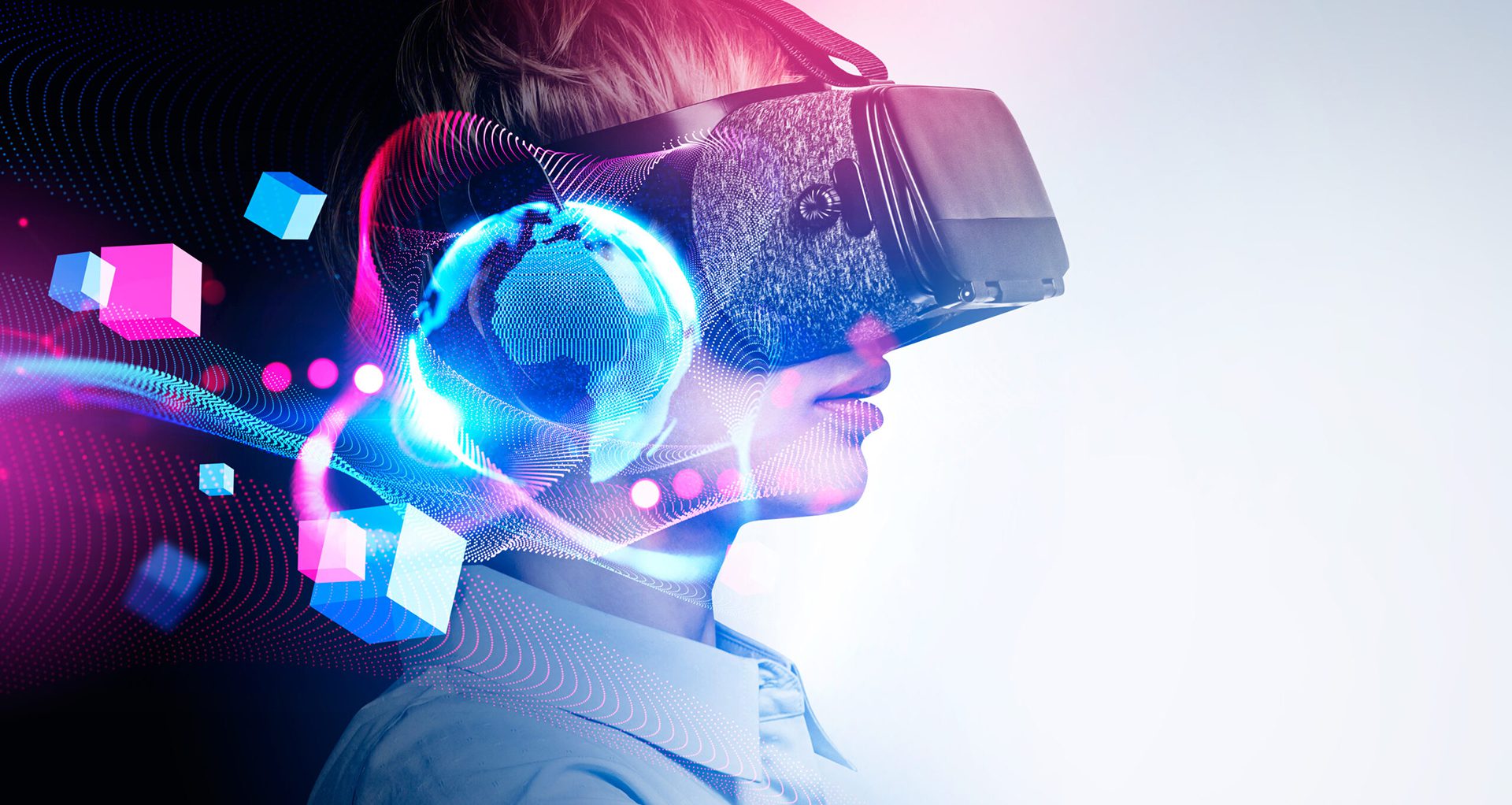For many, it’s hard to envision the role of the metaverse in learning and development without having experienced it themselves. As one of the buzziest concepts around, with so many promises for the future of work, it’s important to understand how leading organizations are beginning to incorporate the metaverse into the workplace.
With the state of the metaverse still emerging, some organizations are working to fulfill their vision and stepping into the metaverse to push L&D forward. It’s up to learning leaders to exercise the potential of their teams and take the first steps into the metaverse and the future of work.
A hybrid world
At its most basic, the metaverse is the “further blending of the physical and digital worlds,” says Derek Belch, founder and CEO of Strivr. It’s an extended reality space that becomes its own digital world through virtual and augmented reality technology. A “third place” beyond work and home, right out of the Starbucks’ playbook, Belch says. “For companies, whether it’s the way they interact with consumers or the way that they train and develop and interact with their own workforce, there’s going to be this third place.” A digital place that could act as a library of knowledge and offer immersive learning experiences for L&D teams to grow and connect.
Looking at the last two years, chief learning officers and senior HR leaders have a very different seat at the table than before the pandemic. With the workplace distancing overnight, it was left up to learning and HR leaders to figure out how to hire, train, communicate with and foster an engaging workforce. “They’ve been placed with a lot more responsibility than in the past and they hold the keys,” Belch says. “I really view the world of HR and L&D as one of the bridges to the metaverse.”
In its own role of helping bridge to the metaverse, Strivr offers a VR training platform with L&D scale in mind — unlike Meta, Microsoft and Apple, which target consumers to join virtual social worlds that are projected to become an $800 billion market by 2024. “We are probably the only company on planet earth that can actually deploy a headset at scale,” Belch says. To the learning leaders and the CLOs that require initiatives at scale, “It’s music to their ears.”
The benefits of immersive training in the metaverse start to pile up with the time and money it saves from onboarding to upskilling. “When you put a headset on for 20 to 25 minutes and learn by doing, you’re getting the same learning outcome as watching that PowerPoint lecture for three hours in that video from 1994,” Belch says. “There’s a really big ROI component there for organizations.” So it makes sense that with results like these, a transition into a metaverse-led workplace feels inevitable.
When augmented realities are more widely available, technology can truly bridge the third space and impact “flow of work tools,” Belch says. Situations such as working “on an assembly line for Ford where cars are going by every 15 seconds, and the glasses are telling me exactly what to do,” says Belch. “And now it’s like mistake-free work. That’s where I see all of this going.”
Instead of putting learners in front of 2D videos where they’re answering questions or just clicking boxes, the metaverse allows learners to experience what a job is actually like before accepting and will enable leaders to see if employees are ready for the next level of work. In the same way flight simulators can prepare pilots for many aspects of operating and flying an aircraft, through technologies like VR the metaverse can prepare employees for almost anything at work.
“This technology can impact every stage of the HR journey for an employee,” Belch says. “We all know the interviewing process is flawed and riddled with bias. Let’s have someone do the job and show us whether or not they can do the job.” And if they mess up in VR, they’re not going to take down the whole factory. From hiring and beyond, there is an abundance of potential spaces that the metaverse can capitalize on and improve.
New realities in action
The Academy, Bank of America’s onboarding, training and development organization, was built for its employees with traditional learning experiences and capable expert trainers. Five years ago, when The Academy was still relatively new, program feedback would, in nearly every case, be: “We want more practice,” says John Jordan, managing director and head of The Academy. “It didn’t matter if it was practice using technology, practice having difficult conversations or practice opening up an account for a client.”
So in they started leveraging technology to create a third space for practice environments. Beyond client-facing technology and AI coaches that prepare employees to communicate with clients, Bank of America was the first financial services firm to launch virtual training programs in its 4,300 retail financial centers last fall.
The VR space “is where we want to have the most real, immersive learning experience for the most important interactions that we have,” says Jordan. “Those can be important interactions because they’re high risk or they are sensitive conversations with clients where people want to practice interactions before they happen.” The Academy has launched about 30 VR learning modules this year, from conversations with a client or employee to de-escalating situations. “It creates a level of retention that you just can’t get anywhere else,” Jordan says. “It makes them feel more confident when they’re having tough situations or conversations that they may not have ever had before.”
Research in medical training has found that information retention rates can reach 80 percent after a full year of training through immersive simulated experiences compared to just 20 percent for traditional training. “People are picking it up and are much more comfortable performing their tasks after going through the simulation,” Jordan says. “It’s incredibly powerful.”
In situations where you need to practice empathy or deal with more soft skills — that many new workers are lacking despite increased amounts of education — “those interactive type situations are the ones that I’ve seen to be most effective,” Jordan says.
When they first piloted the program in 2019, 97 percent of participants felt more comfortable performing their tasks after VR training. “It’s the first time you hear people say, ‘I can’t wait to take the new training,’” Jordan says. “They’re really engaged with it.”
In addition, offering VR programs from onboarding and throughout training is a great way to increase the retention of skills and the retention of top talent. “Virtual reality is just the start,” Jordan says. “As we continue to work in close partnership across our company, we expect to learn a lot.”
Back to the future
Jordan says that if anyone’s considering how VR can play a role in their L&D program, he’d encourage them to “take the leap and explore slowly integrating how they upskill their employees.” He still vividly remembers the first three-minute lesson he had in the metaverse. “If I hadn’t done it myself, I don’t think I would have been quite as passionate about it,” Jordan says. “I was just immediately convinced that there’s a real future here.”
“If you’re a learning leader, you should start to put your toe in the water, if you haven’t already, to see how far virtual reality and even augmented reality technology has come,” Jordan says. “It is getting better and faster and more impactful every day.”
Looking to the future, Jordan says The Academy is not going to stop now that they have a VR headset in every financial center in the U.S. They’re exploring VR programs to address issues like mental health and helping people relax, empathy training and diversity and inclusion programs, among countless other prospective uses in the metaverse and VR.
While Jordan says there will always be value in real face-to-face interactions and actual handshakes, he doesn’t want to rule out the possibility of every employee having a VR device as new generations grow up with the technology at their disposal. “If you’re not ready for the expectation that today’s 18 to 23 year old will have when they’re your employee, you’re going to be left behind,” Belch says. “Within the next five years, this [VR] is going to be everywhere.”
The ultimate hope is that technologies like VR and spaces like the metaverse can allow for processes with limited human bias in approaches to hiring and promotion. Organizations can put mid-level managers in a feedback-heavy simulation to see how they perform based on data. “That data will be so much more powerful than what’s on their resume, or what they say in an interview, or what the color of their skin is or where they went to school,” Belch says.
The Academy expects to have a million practice sessions over simulated learning experiences by 2023 — Jordan sees it as a million opportunities to get better. “We’ve created this environment where we have a giant library of practice. Places where you can go practice and hone your skills,” Jordan says. “It will allow us to move people and have a much more flexible workforce in the future.”
This article was originally published by Chief Learning Officer, Talent Management’s sister publication.












